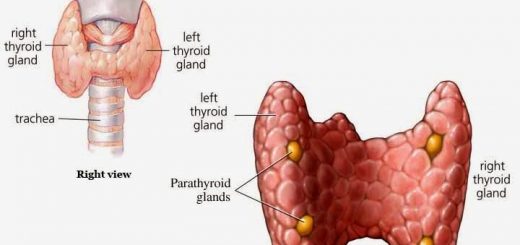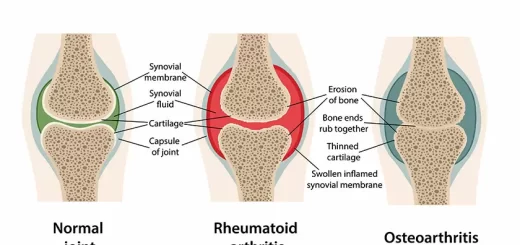Central and Chemical regulation of ventilation, Central and Peripheral chemoreceptors
The ventilatory control mechanism must accomplish two tasks: It must establish the automatic rhythm for contraction of the respiratory muscles. It must adjust this rhythm to accommodate changing metabolic demands (changes in blood PO2. PCO2, and pH), varying mechanical conditions (changing posture), and ventilatory behaviors (speaking, sniffing & eating).
Systems for control of ventilation
- Central control.
- Chemical control.
- Non-Chemical control.
Central regulation of ventilation
Breathing is an involuntary process that is controlled by centers in the medulla and pons of the brain stem.
I. Medullary centers
Two distinct nuclei within the medulla are involved in the generation of the respiratory pattern: the dorsal and ventral respiratory groups.
1. Dorsal respiratory group (DRG) primarily contains inspiratory neurons. It extends for about one-third of the length of the medulla and is located bilaterally in the nucleus tractus solitaris (NTS).
Function:
- One of the major functions of the DRG is the integration of sensory information from the respiratory system. DRG neurons receive sensory input through the glossopharyngeal and vagus nerves – from peripheral chemoreceptors as well as from receptors in the lungs and airways.
- It has premotor neurons that project directly to the motor neurons in the spinal cord (e.g. phrenic motor neurons).
2. Ventral respiratory group (VRG) contains both inspiratory and expiratory neurons. It is ventral to the DRG. It consists of three regions that perform specific functions:
- Rostral VRG (or Bötzinger complex, BötC): It contains interneurons that stimulate the expiratory activity of the caudal region of the VRG. It also sends inhibitory activity to suppress inspiratory neurons during expiration. This contributes to the termination of inspiration (inspiratory off-switch).
- Intermediate VRG contains: A group of inspiratory neurons defined as the pre-Bötzinger complex (pre-Bötc), contains pacemaker neurons that generate spontaneous activity, a project to inspiratory motor neurons in the spinal cord and medulla, which is involved in generating the respiratory rhythm.
- Caudal VRG contains premotor neurons that travel down the spinal cord to synapse on motor neurons that innervate accessory muscles of expiration, such as abdominal and certain intercostal muscles.
Pontine centers
The pons modulates but is not essential for, respiratory output (normal pattern),
1. Apneustle Center
- Site: It is located in the caudal pons.
- Function: Stimulation of these neurons excites the inspiratory center in the medulla, prolonging the period of action potentials in phrenic nerve, and prolonging the contraction of the diaphragm and decrease respiratory rate
2. Pusumetaste Center
- Site: It is located in the rostral pons.
- Function: The pneumotaxic center turns off inspiration, limiting the burst of action potentials in the phrenic nerve, in a way that it limits the size of the tidal volume, and secondarily, Increases the respiratory rate.
Generation of the Respiratory Rhythm
Eupneic breathing consists of two phases inspiration and expiration. Inspiration begins with a steady ramp-like increase in discharge from cells in the DRG and the intermediate VRG (pre-BötC) throughout inspiration. This leads to a gradual increase in the activity of the phrenic nerve output to the diaphragm during 0.5 to 2 seconds of inspiration. The ramp increase in activity helps ensure a smooth increase in lung volume.
At the end of inspiration, an off-switch event (BötC) results in a marked decrease in neuron firing, at which point exhalation begins. During the expiratory phase, the phrenic nerve is inactive; the diaphragm relaxes allowing for elastic recoil of the lung to its resting expiratory volume.
B. Chemical regulation of Ventilation
The central and peripheral chemoreceptors monitor the arterial blood gases-O2, CO2, and pH. A chemoreceptor is a receptor that responds to a change in the chemical composition of the blood or other fluid around it. The minute respiratory volume is proportional to the metabolic rate.
1. Central chemoreceptors
The central chemoreceptors, located in the brain stem, are the most important for the minute-to-minute control of breathing.
Stimulation: The central chemoreceptors are located within the brain parenchyma and are bathed in brain extracellular fluid (BECF), which is separated from arterial blood by the blood-brain barrier (BBB). The central chemoreceptors are highly sensitive to the H+ concentration of CSF.
The BBB has a high permeability to small, neutral molecules such as O2 and CO2 but a low permeability to ions such as Na+, CI−, H+, and HCO3−. An increase in arterial PCO2 rapidly leads to a PCO2 increase of similar magnitude in the BECF, in the CSF, and inside brain cells.
The CO2 that enters the CSF is rapidly hydrated into H2CO3 that dissociates so that the local H+ rises. Increased H+ stimulates the receptors which increase ventilation to wash out excess CO2 and decrease arterial PCO2 back to normal.
The environment of the central chemoreceptors: They are bathed in brain extracellular fluid (ECF) through which CO2 easily diffuses from blood vessels to cerebrospinal fluid (CSF). The CO2 reduces the CSF pH, thus.
Characters of the central chemoreceptors:
- The central chemoreceptors are stimulated at arterial PCO2 higher than 35 mm Hg. Therefore, during rest, the normal arterial PCO2 (40 mm Hg) stimulates and maintains normal breathing i.e. normal arterial PCO2 is the main drive of ventilation in quiet breathing.
- The central chemoreceptors do not adapt to the constant H+ level in the CSF as that created by the steady arterial PCO2.
- The sensitivity of the central chemoreceptors to arterial PCO2 is reduced during sleep, anesthesia, CO2 narcosis, and by some drugs as morphine.
- The central chemoreceptors are not affected by H+ in the blood (as acidosis due to diabetes) because H+ passes BBB with difficulty.
- The stimulatory effect of increased arterial PCO2 on the central chemoreceptors appears after 1-2 minutes and reaches the final steady-state after 5-10 minutes.
2. Peripheral chemoreceptors
The human body has two sets of peripheral chemoreceptors:
- The carotid bodies are located at the bifurcation of each of the common carotid arteries. Information about arterial PO2, PCO2, and pH is relayed to the DRG through a branch of glassopharyngeal nerve called the carotid sinus nerve. Carotid bodies are predominant in humans.
- The Aortic bodies are scattered along the underside of the arch of the aorta. They generate signals that are conveyed to the respiratory center by a branch of the vagus nerve called the aortic nerve. The sensitivity of the aortic bodies is less than the carotid bodies and their ventilation responses are much weaker.
A decrease in arterial PO2 is the primary stimulus for the peripheral chemoreceptors. Increases in PCO2 and decreases in pH also stimulate these receptors and make them more responsive to hypoxemia.
Structure of the peripheral chemoreceptors
Three features characterize the carotid bodies:
- They are extremely small: each weighs only ∼2 mg.
- For their size, they receive extraordinarily high blood flow the largest of any tissue in the body. Their blood flow, normalized for weight, is ∼40-fold higher than that of the brain.
- They have a very high metabolic rate, 2- to 3-fold greater than that of the brain. The blood flow is so much higher, to the extent that the O2 needs of the cells can be met by dissolved O2 alone.
Each of the following changes in arterial blood composition is detected by peripheral chemoreceptors and produces an increase in breathing rate:
Sensitivity to decreased arterial PO2 (hypoxemia)
At normal values of PCO2 and pH, a decrease of PO2 to values below 100 mm Hg causes a gradual increase in the firing rate of the axons in the carotid sinus nerve with a progressive increase in the firing rate when PO2 decreases to values below 60 mm Hg.
Sensitivity to increased arterial PCO2 (hypercapnia)
The carotid body can sense hypercapnia in the absence of hypoxemia or acidosis.
Sensitivity to decreased arterial pH (acidosis)
Decreases in arterial pH cause an increase in ventilation, mediated by peripheral chemoreceptors. This effect is independent of changes in the arterial PCO2 and is mediated only by chemoreceptors in the carotid bodies.
Carbon dioxide transport from tissues to lungs, Tidal CO2 and Haldane effect
Oxygen transport by blood, Importance of P50, Bohr Effect and Treatment of CO poisoning
Ventilation-perfusion relationships and why is ventilation higher at the base of the lung
Regional difference in ventilation, Pulmonary circulation, Shunt and Lung perfusion zones
Mechanics of ventilation, Structures of Respiratory system and Functions of conducting zone
Mechanics of Pulmonary Ventilation and Pressure changes during Respiratory cycle
Acute hypercapnia, Non-chemical modulation of ventilation and ventilation response to exercise



